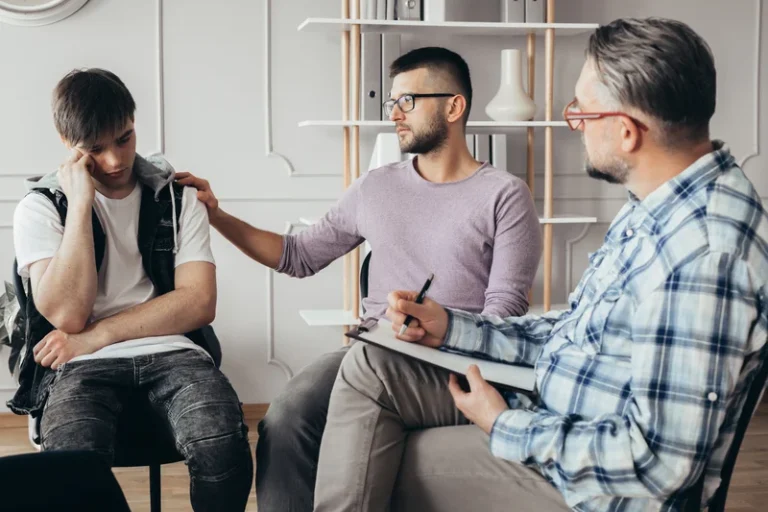
By the end of the 1990s, pharmaceutical companies were assuring the medical community that opioids were not dangerous or addictive, something that turned out to be demonstrably untrue on both counts. The length of the tapering period typically depends on how long you’ve taken opioids. If you only use opioids for a few days after surgery, you can simply stop taking them once the severity of your pain improves, which usually happens within a few days.
With other depressant drugs
Medical attention is still urgently needed after the administration of naloxone. Instead, healthcare providers rely on a thorough evaluation of your medical history and behaviors surrounding opioid use. They may order drug tests and evaluate prescription drug monitoring program reports.
Couples Therapy
- Opioid addiction, also known as opioid use disorder (OUD), is a chronic and relapsing disease that can affect anyone.
- NOWS can cause early labor, fetal growth restriction, placental abruption, and fetal death among other problems.
- Health experts consider a person to be in recovery if they continue to abstain from the uncontrolled use of opioids regardless of whether they take methadone for life or gradually taper their dose.
- Researchers estimate that genetic factors are responsible for 40% to 60% of the vulnerability to any substance use disorder.
You will also increase the risk of addiction developing if you take more opioids than directed, or if you take more frequent doses than prescribed. The signs of opioid addiction will vary depending on the type of opioid and other variables. This guide will help you to establish whether you or a loved one might be struggling with opioid use disorder. You can start your search by using the SAMHSA Opioid Treatment Program Directory, or explore treatment programs in your area by using the Department of Health and Human Services treatment center directory.
What is the difference between opioid use disorder and opioid dependence?
In one survey, 94% of respondents said they chose to use heroin over prescription painkillers because it was cheaper and easier to get. To learn more specifically about opioid use disorder, visit Treatment for Opioid Addiction. Research has demonstrated that MOUD is effective in helping people recover from their OUD.567 It is important to find what works best each individual. In cases of diarrhea-predominate irritable bowel syndrome, opioids may be used to suppress diarrhea.61 Loperamide is a peripherally selective opioid available without a prescription used to suppress diarrhea.
Opioid Use Disorder: Treating
Therefore, these treatments should be part of a comprehensive treatment plan that is consistently followed before, during, and after the person quits opioid addiction treatment opioids. All of the updated recommendations are designed to both improve the quality and consistency of care and reduce barriers to access to care for Americans living with OUD. The updated recommendations aim to support initiation of buprenorphine treatment in the emergency department and other urgent care settings.
- Please call our free, confidential helpline at to speak to one of our caring admissions navigators about opioid treatment near you, using health insurance to pay for rehab, and what rehab options may be right for your needs.
- While opioid addiction is serious and challenging, treatments that address the physical, psychological, and social aspects of substance use disorders can help.
- You are living with your peers, and you can support each other to stay in recovery.
- Wade also explains that changes in the available formulations can help improve its delivery and medication adherence.
Preventing Opioid Use Disorder
Some hospitals also offer inpatient programs for people who have medical conditions. These treatments include several kinds of counseling or behavioral therapy as well as medications. Over time, using or abusing opioids brings about functional and structural brain changes. The severe physical and psychological withdrawal symptoms that present during detox mean that most people find the ideal pathway to recovery is a supervised opioid detox before an inpatient or outpatient treatment program. Over time, individuals can develop a physical and psychological dependence on opioids, leading to intense cravings and withdrawal symptoms when attempting to stop using them.

Other NIDA Sites

Residential rehab is almost always advisable in the case of severe opioid use disorders. Inpatient treatment is also recommended for those alcohol rehab with unstable or unsupportive home environments not conducive to recovery. Buprenorphine is a medication that works by blocking opioid receptors in the brain, which prevents opioid withdrawal symptoms without causing the same amount of sedation or euphoria experienced with pure opioid agonists.

Synthetic opioids
Note that if someone is prescribed opioids for pain and is using them as prescribed, the physical dependence criteria are not factored into the number of signs and symptoms. Opioid addiction has been a major public health challenge for many years. But progress is being made in helping those who are affected by opioid addiction—or, https://ecosoberhouse.com/article/why-the-nose-of-an-alcoholic-changes-rhinophyma/ as it is known in the medical world, opioid use disorder (OUD)—to overcome it.
They were created to foster a safe and supportive environment where recovery can be the person’s primary focus. Opioid addiction refers to the prolonged use of opioid substances that induce significant physical and mental harm to the person abusing them. Opioid addiction can cause significant harm to individuals, their families, and communities. Regular use of opioids can also lead to physical dependence, meaning that the body relies on the drug to function normally.
- The National Practice Guideline by the American Society of Addiction Medicine (ASAM) recommends combining MOUD and counseling.
- Clinicians should offer naloxone and education on proper use for overdose reversal to patients with OUD and to their household members/significant others.
- This is because it’s easy to miscalculate and use doses that they previously tolerated.
- For those without insurance, we provide affordable self-pay options to make care accessible to everyone.
- But they also stimulate the reward pathway in the brain, which can cause a feeling of well-being and happiness known as euphoria.
- Like other substance use disorders, OUD is a chronic brain disease in which people continue to use opioids in spite of harms caused by their use.
This means that a larger dose of opioids is needed to get the same level of pain relief or euphoric high. FDA-approved medications indicated for the treatment of OUD include buprenorphine (often combined with naloxone), methadone, and naltrexone. American Addiction Centers operates treatment centers across the nation and offers evidence-based treatment that can help you start the path to recovery. Please call our free, confidential helpline at to speak to one of our caring admissions navigators about opioid treatment near you, using health insurance to pay for rehab, and what rehab options may be right for your needs.


.png)
.png)